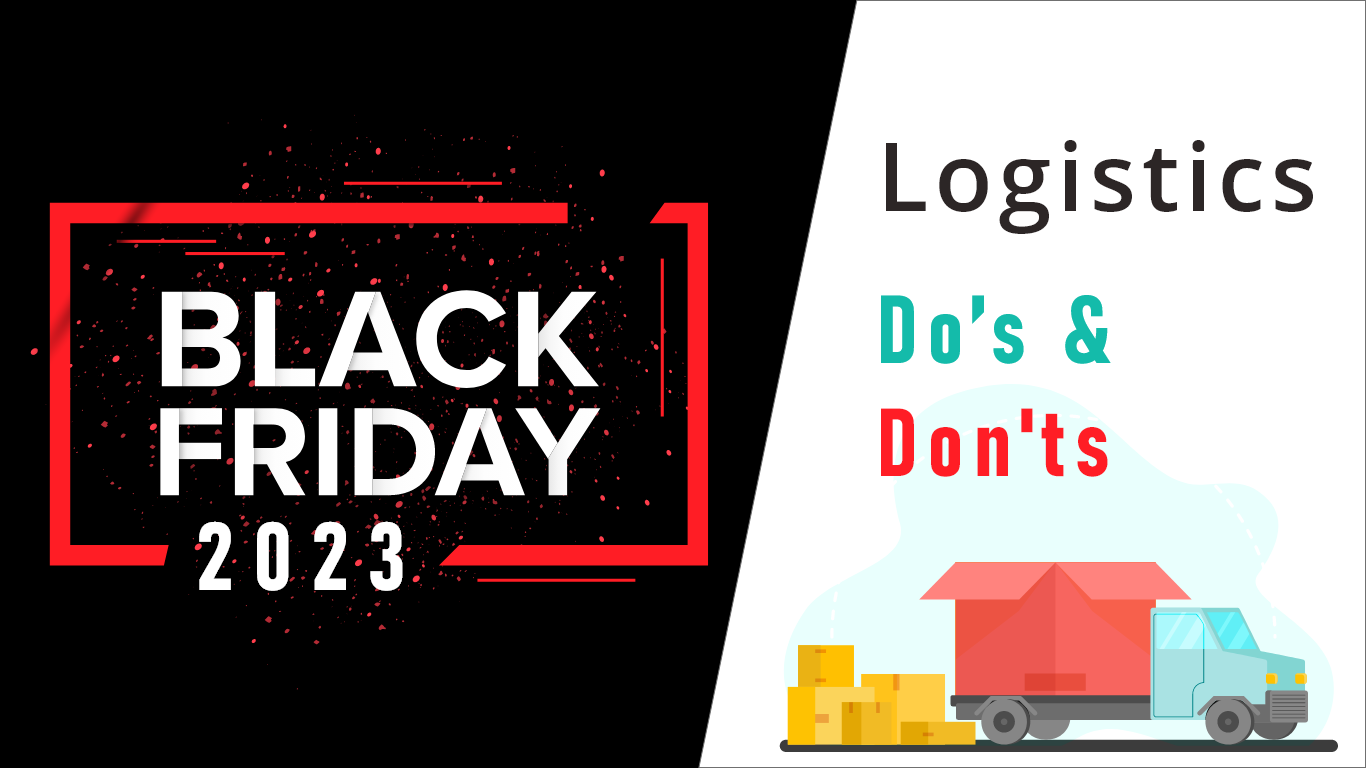Black Friday refers to the day after the U.S. Thanksgiving holiday, which has also traditionally been a holiday itself for many employees. It is typically a day full of special shopping deals and big discounts and is considered the beginning of the holiday shopping season.
Logistics dos and don’ts for Black Friday 2023
Do’s:
Plan Ahead:
Analyse previous peak activities like top-performing products and categories. Start planning for Black Friday well in advance. Create a detailed logistics plan, considering factors like increased demand, additional staffing, and inventory management.
Stock Up:
Ensure that you have sufficient inventory to meet the increased demand. Overstocking can be costly, so use historical sales data and demand forecasting to make informed decisions.
Optimise Warehouse Operations:
Streamline your warehouse operations to handle the increased volume efficiently. Consider using automation and technology to improve order processing and reduce errors.
Staffing:
Hire and train additional staff to handle the surge in orders, both in warehouses and for customer support. Seasonal employees can be valuable during this time.
Enhance Shipping Options:
Offer various shipping options, including expedited shipping, to cater to different customer needs. Communicate clear delivery timelines and cutoff dates for holiday delivery.
Invest in Technology:
Implement tracking systems, inventory management software, and order management tools to monitor and manage inventory and orders in real-time.
Don’ts:
Underestimate Demand:
When customers encounter out-of-stock items, not only do they frequently abandon their carts, but about half of these instances result in order cancellations. Failing to accurately estimate the demand can lead to stockouts and lost sales. Rely on data and trends to make informed decisions.
Overpromise on Delivery:
Don’t promise delivery times that you can’t meet. It’s better to provide realistic estimates to manage customer expectations.
Neglect Inventory Management:
Poor inventory management can result in overstocking or stockouts. Keep a close eye on inventory levels and reorder as needed.
Cut Corners on Quality Control:
To meet the demand, you might be thinking of cutting corners on quality for your product, packaging, or delivery. While it may seem like a cost-saving measure initially, such shortcuts can have detrimental effects on your brand’s reputation in the long run. It’s a common misconception that when customers seek discounts or try to maximise their value for money, they’re willing to overlook quality. In reality, even the most budget-conscious shopper expects a certain standard of service and product integrity.Rushing through quality checks can lead to shipping out defective products, which can result in costly returns and damage to your reputation.
Ignore Customer Service:
Neglecting customer service during this period can lead to customer dissatisfaction. Be prepared to handle inquiries and issues promptly.
Preparation for Retail Peak Season
Demand Forecasting:
Start by analysing historical data and market trends to forecast the expected surge in demand during the peak season. Accurate demand forecasting is essential for planning and resource allocation.
Capacity Planning:
Assess your current infrastructure, including warehouse space, transportation resources, and workforce. Determine if you need to expand your capacity or partner with third-party logistics providers to handle the increased demand.
Inventory Management:
Review and optimise your inventory management processes. Ensure that you have sufficient stock of popular products to meet demand without overstocking less popular items.
Technology and Systems:
Invest in logistics and inventory management software to streamline operations, improve order accuracy, and enhance visibility across the supply chain.
Workforce Planning:
Plan ahead for staffing shortages. Companies can use predictive analytics to know how many extra workers they would need and for how long. Recruit and train additional staff to handle the increased workload during the peak season. Seasonal employees can be valuable for meeting the surge in demand.
Role of Technology in Managing Logistics Operations
Logistics companies can leverage a whole slew of technologies, including predictive analytics, artificial intelligence, machine learning, cloud computing, and augmented reality to help them cope with the impact and challenges that Black Friday shopping generates for the logistics industry not only in 2023 but also for the upcoming years.
Logix Transportation Management Systems (TMS)
LogixTMS is a logistics platform that enables businesses to ship, move, and receive goods. The system plans, executes, and optimises the physical movement of goods, both incoming and outgoing. The software optimises transportation routes and helps companies to manage their fleets efficiently.
Logix Warehouse Management Systems (WMS)
Logix WMS facilitates efficient inventory management, order fulfilment, and warehouse operations. It enables better control over stock levels, picking and packing processes, and overall warehouse productivity.
Wrapping It Up
To make your Black Friday in 2023 a successful Friday, focus on three key factors:
Smart Strategy:
Develop a strong supply chain plan by using technology, diversifying suppliers, and preparing inventory.
Cash Reserves:
Ensure you have enough capital for all your business needs.
Customer Experience:
Offer seamless shopping experiences to stand out in the competitive ecommerce market.


